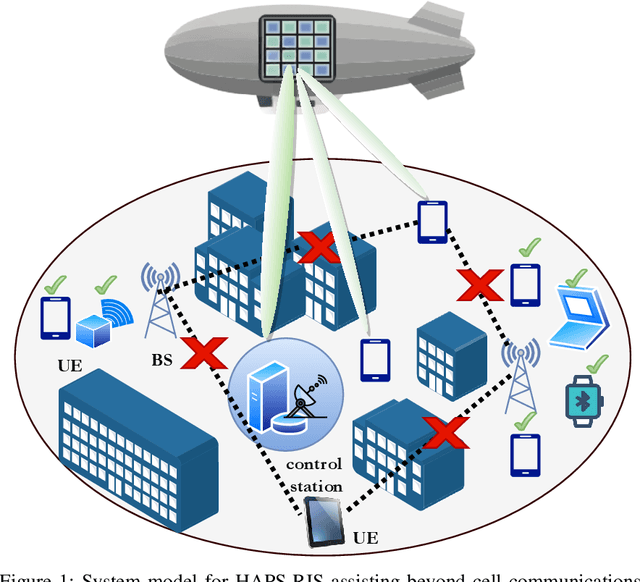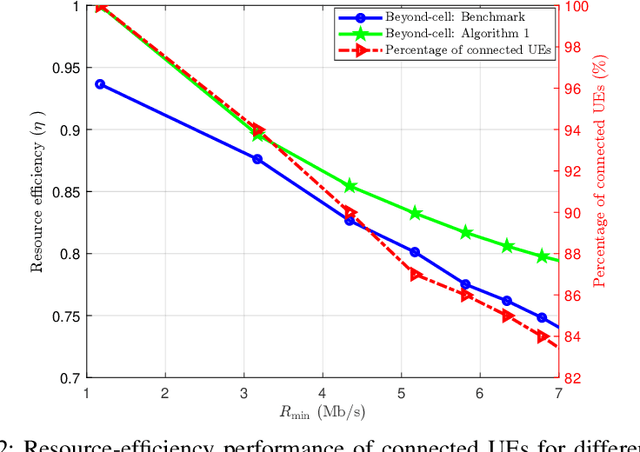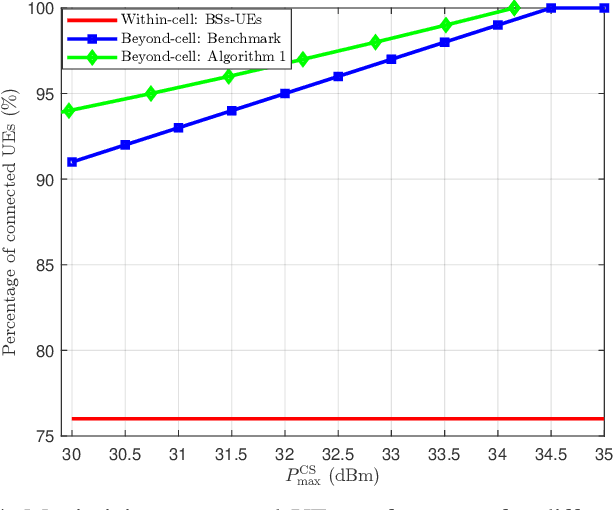Safwan Alfattani
Resource-Efficient HAPS-RIS Enabled Beyond-Cell Communications
Jul 23, 2022



Abstract:In the future, urban regions will encounter a massive number of capacity-hungry devices. Relying solely on terrestrial networks for serving all UEs will be a cost-ineffective approach. Consequently, with the anticipated supply and demand mismatch, several UEs will be unsupported. To offer service to the left-out UEs, we employ an energy-efficient and cost-effective beyond-cell communications approach, which uses reconfigurable intelligent surfaces (RIS) on a high-altitude platform station (HAPS). Particularly, unsupported UEs will be connected to a dedicated control station (CS) through RIS-mounted HAPS. A novel resource-efficient optimization problem is formulated that maximizes the number of connected UEs, while minimizing the total power consumed by the CS and RIS. Since the resulting problem is a mixed-integer nonlinear program (MINLP), a low-complexity two-stage algorithm is developed. Numerical results demonstrate that the proposed algorithm outperforms the benchmark approach in terms of the percentage of connected UEs and the resource-efficiency (RE). Also, the results show that the number of connected UEs is more sensitive to transmit power at the CS than the HAPS size.
Optimization of Quantized Phase Shifts for Reconfigurable Smart Surfaces Assisted Communications
Nov 22, 2021



Abstract:Reconfigurable Smart Surface (RSS) is assumed to be a key enabler for future wireless communication systems due to its ability to control the wireless propagation environment and, thus, enhance communications quality. Although optimal and continuous phase-shift configuration can be analytically obtained, practical RSS systems are prone to both channel estimation errors, discrete control, and curse of dimensionality. This leads to relaying on a finite number of phase-shift configurations that is expected to degrade the system's performances. In this paper, we tackle the problem of quantized RSS phase-shift configuration, aiming to maximize the data rate of an orthogonal frequency division multiplexing (OFDM) point-to-point RSS-assisted communication. Due to the complexity of optimally solving the formulated problem, we propose here a sub-optimal greedy algorithm to solve it. Simulation results illustrate the performance superiority of the proposed algorithm compared to baseline approaches. Finally, the impact of several parameters ,e.g., quantization resolution and RSS placement, is investigated.
 Add to Chrome
Add to Chrome Add to Firefox
Add to Firefox Add to Edge
Add to Edge